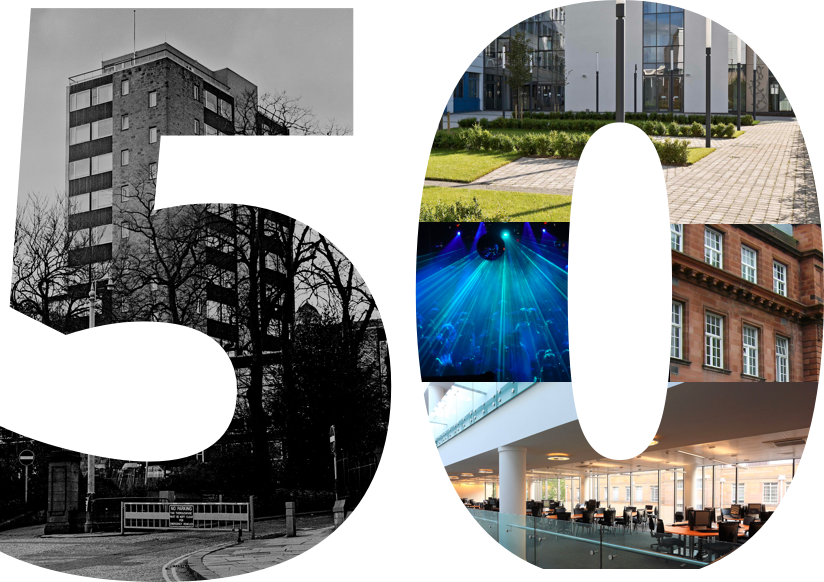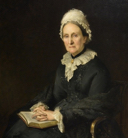
-
Celebrations begin to commemorate 50 years of the University of Dundee
2017 -
The University of Dundee becomes a fully independent institution under the terms of the Royal Charter.
1967 -
Ordinances issued in 1897 made University College form part of St Andrews. and establish a Faculty of Medicine.
1897 -
The Deed formally creating University College Dundee was signed by founders Miss Mary Ann Baxter and her cousin Dr John Boyd Baxter.
1881
Dundee’s first Professor of Biology
-
date
Fri, 24 Mar 2017
-
Running Time
00:07:02
Sir D’Arcy Wentworth Thompson was Dundee’s first Professor of Biology – the starting point for the massive growth of Life Sciences that is now one of the principal employers in the city
Episode Transcript
I'm Matthew Jarron and welcome to the University of Dundee and our weekly look at the moments in history - both of the institution and the city – that have created the vibrant, dynamic place that we’re now part of. As we celebrate the 50th anniversary of the University becoming independent, we examine the people, discoveries and decisions that have brought us to 2017 as Scotland’s University of the Year and one of the world’s Top 200 universities, delivering teaching and research that is helping to transform lives across society. In the years to come we have ambitions to be the top University in Scotland in everything we do.
Sir D’Arcy Wentworth Thompson was Dundee’s first Professor of Biology – the starting point for the massive growth of Life Sciences that is now one of the principal employers in the city. An extraordinary polymath who combined interests in biology, mathematics and classical art and literature, his work continues to inspire scientists, artists and architects alike.
During the 32 years that D’Arcy lived and worked in Dundee, he built up one of the most impressive natural history museums in the country, travelled to the far corners of the globe as part of an international inquiry, researched and wrote one of the most influential science books of the century and became actively involved in the social and cultural life of his adopted city.
D’Arcy (he was always known simply as ‘D’Arcy’) was born in Edinburgh in 1860 but came to Dundee at the age of just 24 to take up the Chair of Biology at the new University College. He quickly acquired a reputation as an inspiring teacher. His successor Prof Peacock recalled: “Fortunate were all who saw him use sketches, bits of paper and string, and soap bubbles to explain the mathematics of the honeycomb, the nautilus shell and such like...things”. D’Arcy could also be very impatient with those who were not entirely committed to the subject. He was once heard complaining of some idle students: “I don’t mind spoon-feeding them but I draw the line at working their jaws."
To teach his subject, he built up a large and impressive Museum of Zoology, a teaching collection containing representatives of all the principal groups of organisms. Within a few years it had become one of the largest of its kind in Britain. “Additions to my Museum are numerous,” wrote D’Arcy in 1885. “Within the last week I have had a porpoise, two mongooses, a small shark, an eel 8ft long and 150 lb in weight, a young ostrich and two bagfuls of monkeys: all dead of course.”
Of particular help to D’Arcy were the Dundee whalers, who brought back numerous specimens for him, many of which he then swapped for other animals from collections around the world.
In 1896 and 1897, D’Arcy went on his own epic voyages to the Bering Sea, representing the British Government in an international inquiry into the Fur Seal industry. Throughout the 19th Century, the Arctic Fur Seal had been hunted for its fur, but by the 1890s this exploitation had become an international concern.
D’Arcy visited the seals’ breeding grounds in the Pribilof and Commander Islands, and the reports that he compiled drew attention not only to the declining numbers of the Fur Seal population, but also the near extinction of the Sea Otter and the threat to whales. In this way, he was one of the first people in the world to press governments for conservation agreements, and his report contributed to the issuing of species protection orders.
In 1898 D’Arcy was appointed scientific adviser to the Fishery Board for Scotland, and began using statistical information collected from local fish catches to make more reasoned decisions on the management of fish stocks.This led him to serve on the International Council for the Exploration of the Sea along with a close friend, the explorer Nansen.D’Arcy needed all of his diplomacy abroad to keep the British government on board, while at home he worked hard to strike the right balance between conserving fish stocks and maintaining the fishermen’s livelihood.
At the same time, D’Arcy was also actively involved in various local organisations in Dundee, many of which existed to help people in the poorer parts of the city. These included the Dundee Social Union, the Dundee Working Men’s Field Club and Dundee Royal Infirmary. He was also a prominent member of the Dundee Naturalists’ Society and was one of the main initiators of the city’s Medical School.
Although he produced numerous publications in his lifetime, today, D’Arcy is best known for one book, On Growth & Form. Described as “the greatest work of prose in 20th century science”, it was a pioneering work, suggesting that the development of living organisms was influenced by physical and mathematical laws. D’Arcy used examples throughout the natural world, from nautilus shells and narwhal tusks to soap bubbles and snow flakes.
Although published in 1917, D’Arcy had become interested in the subject much earlier. As early as 1889 he wrote “I have taken to Mathematics, and believe I have discovered some unsuspected wonders in regard to the Spirals of the Foraminifera!” Aware that his ideas were controversial, he delayed publishing anything on the subject until 1908, when he wrote a paper for Nature on ‘The Shape of Eggs and the Causes which Determine Them’. Finally in 1915 he assembled his ideas into a work which was originally intended to be “a little book” sold for a shilling and ultimately (in its second edition) ran to well over 1,000 pages in two volumes.
When the book came out it made an immediate impact, praised by specialist and general critics alike. Since then it has inspired not just biologists but also artists, architects, anthropologists, computer scientists and cyberneticists. Its admirers include such renowned figures as Alan Turing, Claude Levi-Strauss,Henry Moore, Salvador Dali, Le Corbusier and Mies van der Rohe. With the growth of computer-based mathematical modelling techniques and increasing interest in natural design and evolutionary-developmental biology, D’Arcy’s work is arguably more influential today than ever before.
In his later years D’Arcy received numerous honours including a knighthood, the Linnean Medal and the Darwin medal.He moved to the University of St Andrews where he was still teaching at the time of his death, aged 88, in 1948. Today his surviving collection can be seen in the D’Arcy Thompson Zoology Museum at the University of Dundee, and he is also honoured by a plaque in Discovery Walk at the waterfront and – more unusually – by the restaurant named after him on Old Hawkhill.
Tune in next week for another podcast from the series, subscribe to Itunes to get the podcast delivered to your inbox and check out the website – www.dundee.ac.uk/50 for extra material
Matthew Jarron

Matthew Jarron is Curator of the University of Dundee’s Museum Services, which includes the D’ArcyThompson Zoology Museum, the Tayside Medical History Museum and the Tower Foyer & Lamb Galleries. He is secretary of the Abertay Historical Society and a committee member of the Tayside Museums Forum and the Scottish Society for Art History. He is the author of several publications including ‘Independent & Individualist – Art in Dundee 1867-1924’.
-
Celebrations begin to commemorate 50 years of the University of Dundee
2017 -
The University of Dundee becomes a fully independent institution under the terms of the Royal Charter.
 1967
1967 -
Ordinances issued in 1897 made University College form part of St Andrews. and establish a Faculty of Medicine.
1897 -
The Deed formally creating University College Dundee was signed by founders Miss Mary Ann Baxter and her cousin Dr John Boyd Baxter.
 1881
1881